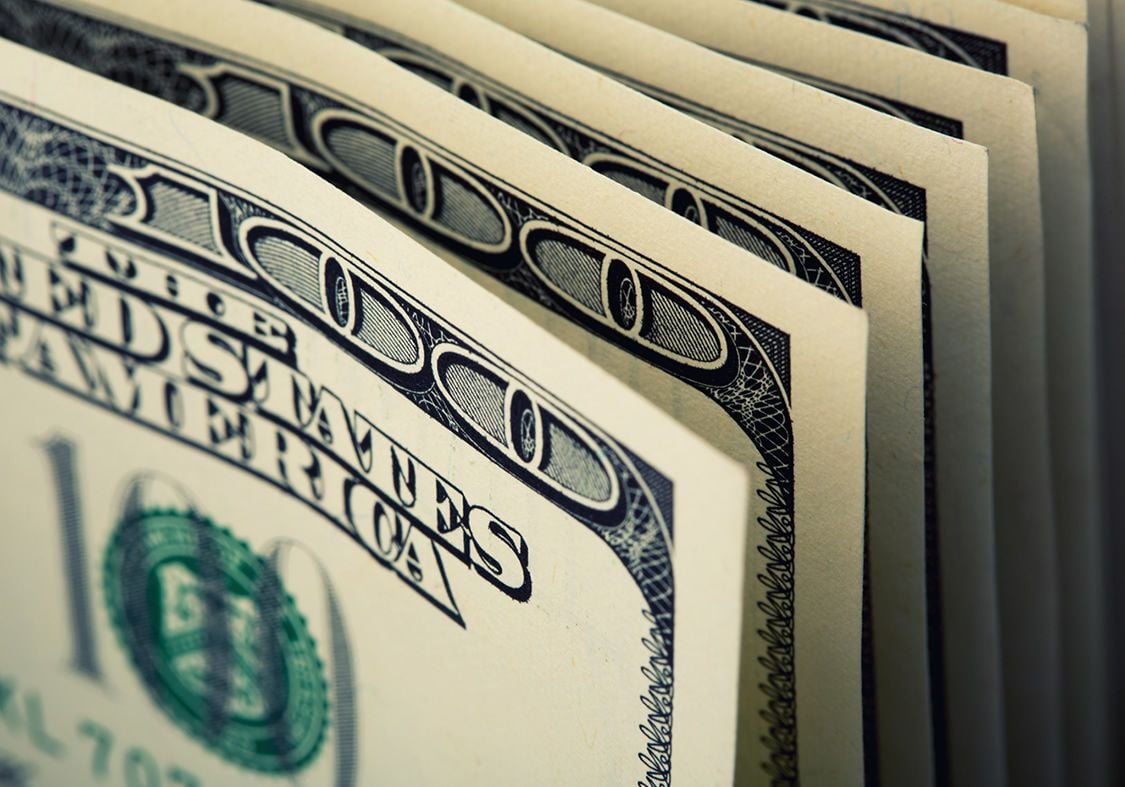U.S. Dollar Poised for Gentle Decline as Fed Takes a Breather, but Economy Remains on Solid Footing
- Written by: James Skinner

© Nomad Soul, Adobe Stock
- U.S. Dollar to decline as Fed steps off interest rate gas.
- But other factors to ensure depreciation at modest pace.
- Growth outcomes in U.S. and elsewhere are key to outlook.
The U.S. Dollar is likely to falter around year-end and depreciate gently throughout 2019 as the Federal Reserve (Fed) slows the pace at which it raises its interest rate, according to analysts and economists.
Expectations of a pause in the Federal Reserve's climb toward higher interest rates are mounting despite data continuing to show that the U.S. economy remains in a robust condition.
Personal spending rose by 0.6% in October according to data released Thursday, its fastest since April, when markets had looked for 0.4% growth.
Personal income rose 0.5%, its fastest since October 2016, when markets were looking for 0.2%. And the economy has continued to create jobs in recent months, despite unemployment falling to its lowest level since 1969.
That should mean even higher inflation further down the track, according to conventional economics, and the trend-to-date explains why the Fed has raised its interest rate eight times since the end of 2015.
Fed officials hinted in November that they intend to lift the Federal Funds so that it reaches as high as 3.5% in 2020. The Fed Funds range was lifted to between 2% and 2.25% back in September.
Nonetheless, the Fed's preferred measure of inflation held steady at 2% during October, while consumer price growth actually fell from 1.9% to 1.8% when food and energy costs are excluded from the goods basket.
"That's not miles from the Fed's 2% target, but gives a bit of support to the market's view that the Fed will take things slower from here. The solid growth indicator gives the Fed a green light for a December hike, but if they are looking to pare back their earlier dot-plot forecast for 2019, they can now point to a bit lower inflation as a reason to do so," says Avery Shenfeld, chief economist at CIBC Capital Markets.
Changes in interest rates are normally only made in response to anticipated movements in inflation but impact currencies through the push and pull influence they have on capital flows, as well as their allure for short-term speculators.
Federal Reserve chair Jerome Powell put a dent in the Dollar Wednesday during a speech on financial stability at The Economic Club of New York.
The speech led markets to believe his view on the strength of the U.S. economy has deteriorated of late and that it could mean the Federal Reserve will change its forward guidance on rates in December.
Some say the comments were misinterpreted but speculation about a possible pause in the Fed rate hiking cycle has been building since the third-quarter.
"We anticipate the Fed will signal a more gradual path in raising interest rates at the upcoming December 19 FOMC meeting. This may involve a change in language and a lower range in the "dot plots". The FOMC's comments at this meeting should add some further downside pressure to the USD," says Adam Myers, a currency strategist at Commonwealth Bank of Australia.
U.S. rates have risen substantially since 2015 and are expected to soon constrain the economy, while companies and consumers are grappling with the disruptive and inflationary impact of President Donald Trump's trade tariffs.
President Trump has also repeatedly criticised Chairman Powell for having raised interest rates three times since his appointment in February 2018.
The Dollar has reigned supreme over all other currencies this year as a result of the Fed's policy, but conventional economic theory and speculation among analysts suggests the greenback's days in the sun are nearly over.
"A multitude of factors still supporting the USD suggest that the USD won’t yet depreciate too far," says Commonwealth's Myers. "Those factors include an elecated U.S. minues G10 real two-year swap spread, a well-performing U.S. economy, a high terms of trade, and a relatively narrow U.S. current account deficit which is currently funded by capital inflows from all three major categories (FDI, portfolio and 'other')."
The Dollar index more than reversed a 4% first-quarter decline in 2018 after it became clear the global economy was slowing and and growth in the U.S. was picking up, leading to monetary policy divergence among central banks.
This kind of divergence normally supports the Dollar while synchronised rate policies, and divergence in reverse, tend to hurt the greenback.
As things stand, economies such as the Eurozone, Canada, Japan and China have all slowed in the third-quarter, along with the U.S. economy.
Clarity about which of those economies are rebounding, and those that have continued to slow, during the fourth quarter will be key to exactly how fast the Dollar depreciates if and when the Fed signals a pause in its interest rate cycle.
"The Bloomberg Economic Surprise Index continues to slide," says Derek Halpenny, European head of markets research at MUFG. "So we still see reason to highlight to readers the risk of further evidence of slowing growth in the US that prompts increased speculation of a more cautious approach to monetary tightening by the Fed next year."
The Dollar index was quoted flat at 96.82 Thursday. The Pound-to-Dollar rate was -0.28% lower at 1.2785 while the Euro-to-Dollar rate rose 0.15% to 1.1381.
Advertisement
Bank-beating exchange rates. Get up to 5% more foreign exchange by using a specialist provider to get closer to the real market rate and avoid the gaping spreads charged by your bank when providing currency. Learn more here




